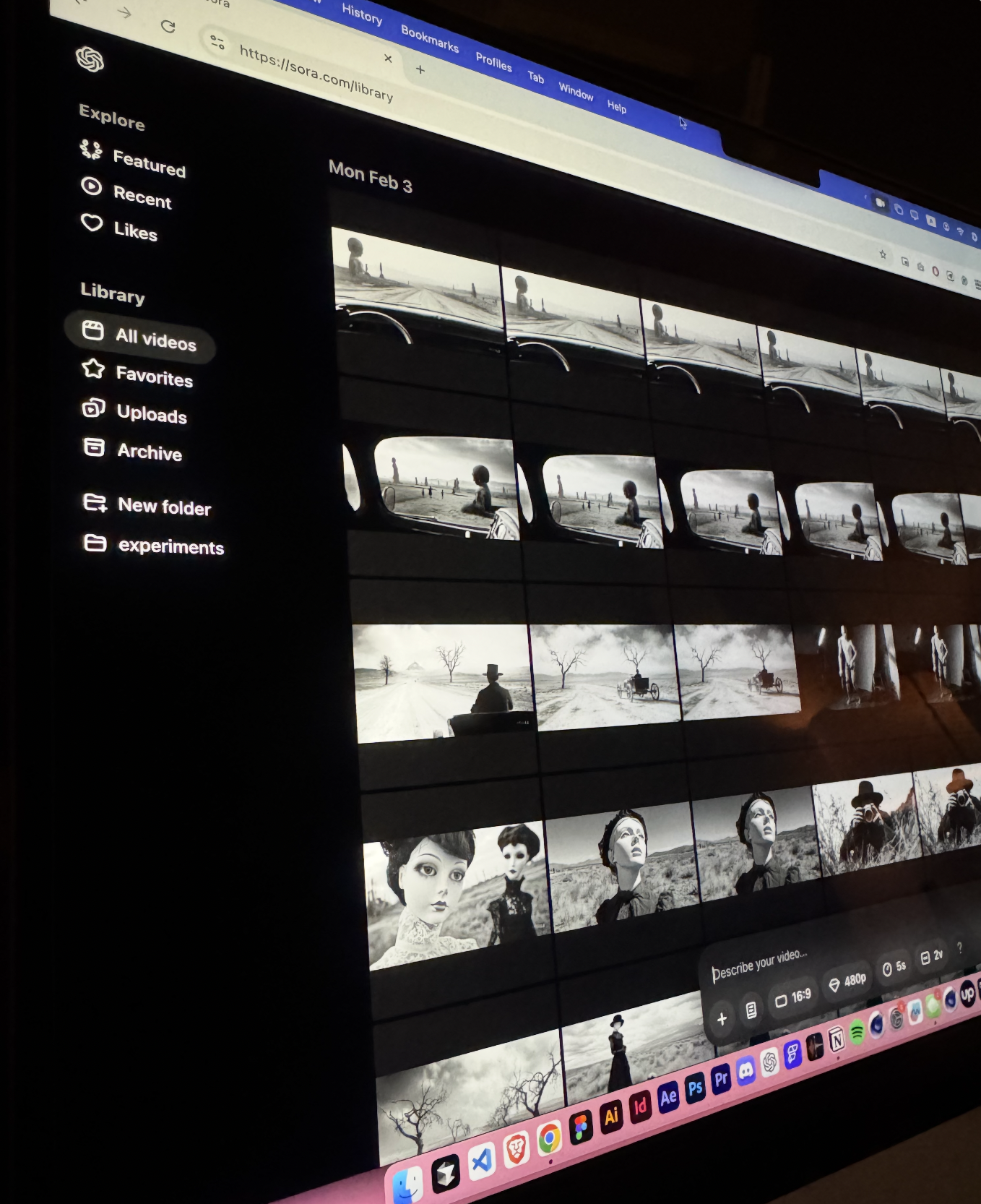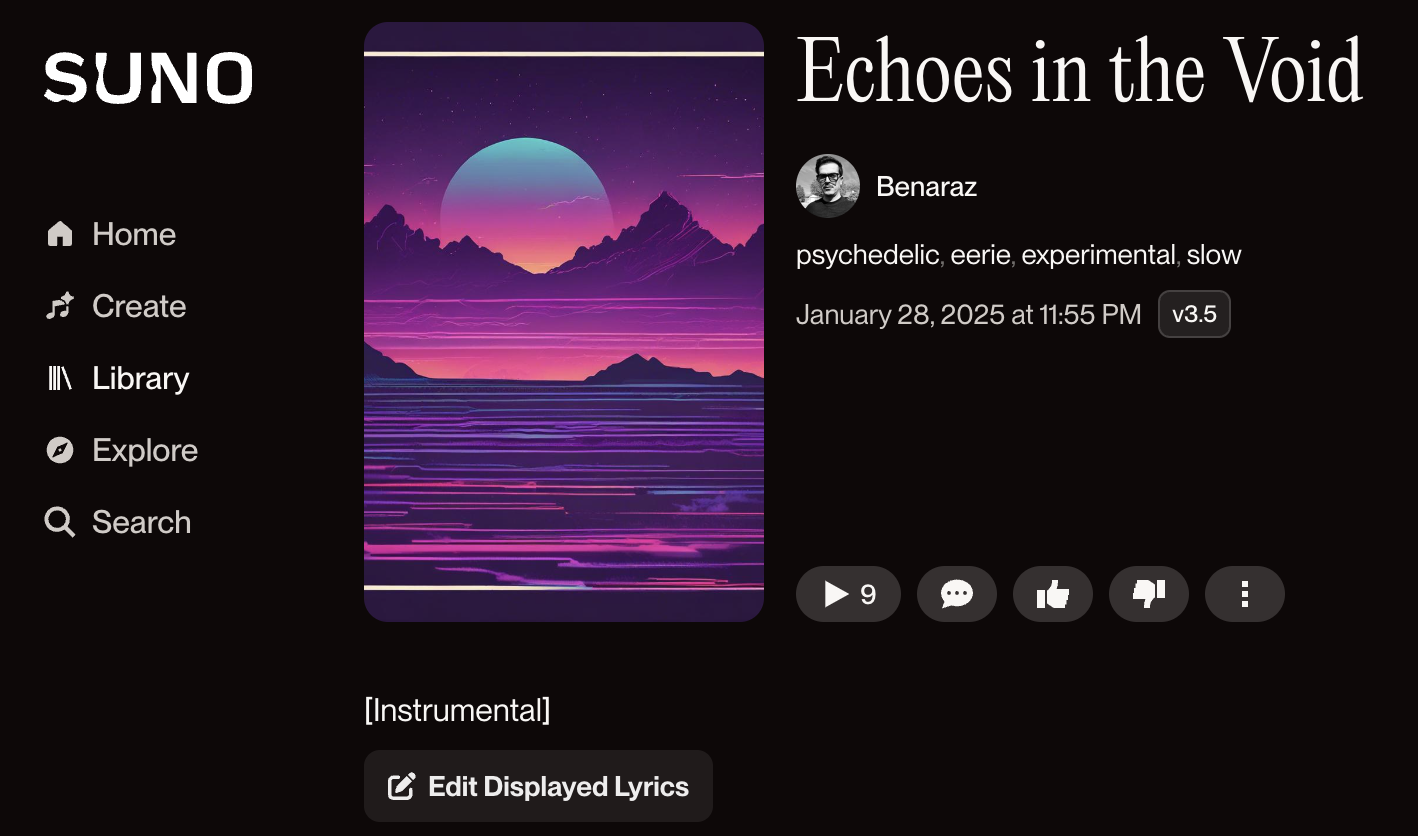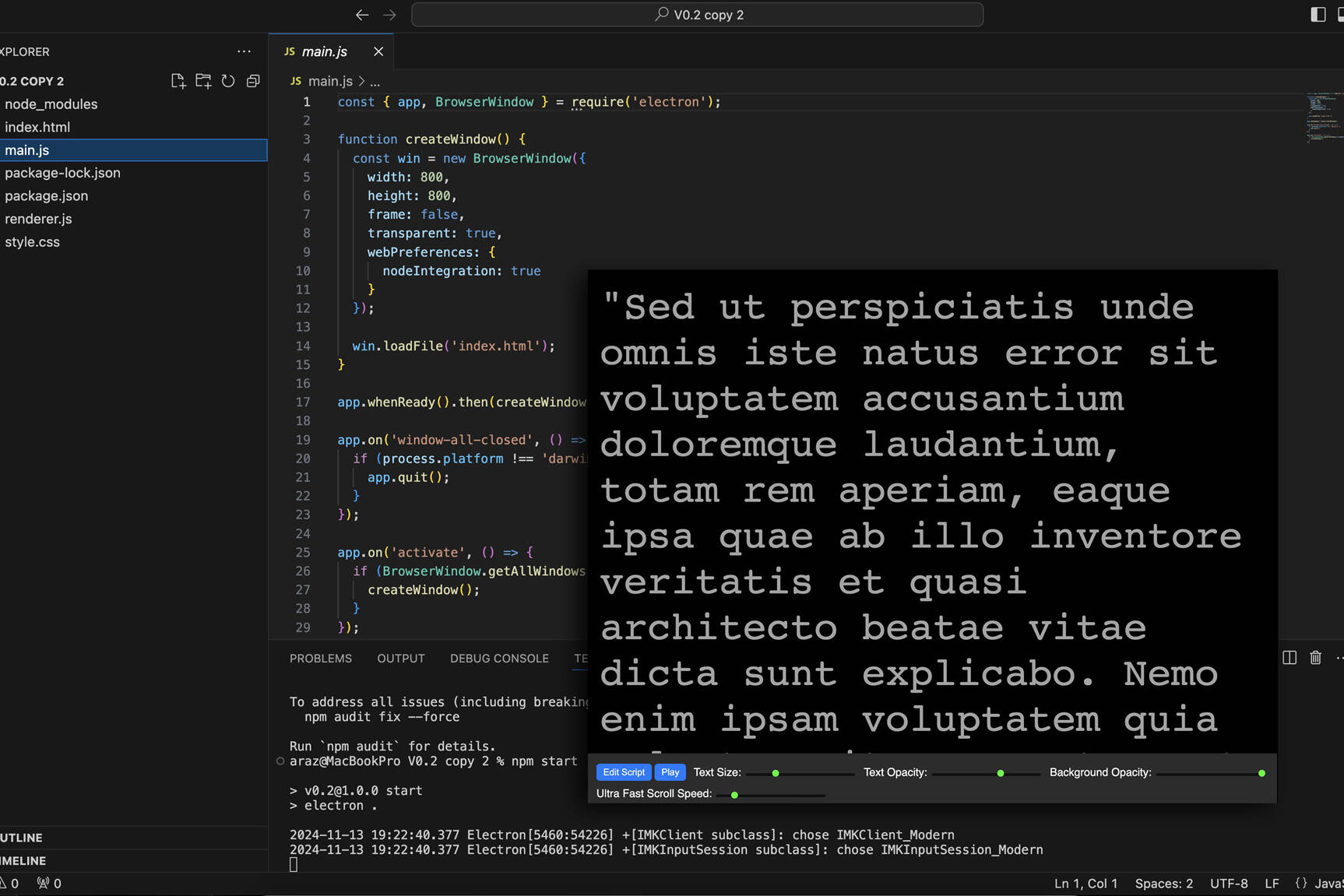Concept & Ideation
The idea was to create a short film entirely with AI, using generative tools for every aspect—script, visuals, video, music, voiceover, and sound effects. I envisioned a man driving through a vast 1890s landscape, aligning with the era of Man Ray. His journey would be punctuated by surrealist elements like mannequins, abstract objects, and avant-garde compositions reminiscent of Ray’s photography. The goal was to blend AI-generated assets into a cohesive narrative that felt eerie, experimental, and visually striking.
Visual Development with Midjourney
To conceptualize the surreal imagery, I used Midjourney to generate AI-based stills. The prompts aimed to capture a Man Ray-inspired aesthetic while adapting it to an open Californian landscape from the 1890s.
Example Prompts:
- An artistic black-and-white photoshoot of a close-up doll and mannequin, surreal props in an open 1890s California landscape, Man Ray photography style.
- A vintage black-and-white top-view photograph of a dead man lying in a coffin, surrounded by surreal objects in a Californian landscape, 1890s, Man Ray style.
These AI-generated images informed the overall visual direction and acted as references for video generation.
Music, Narrative & Sound Design
For the soundtrack, I used Suno to generate an eerie, atmospheric composition that set the tone for the film. Instead of just looping a general ambient sound, I fine-tuned prompts to create a psychedelic, experimental score that evolved dynamically with the visuals.
11 Labs generated the voiceover from the script, delivering an eerie, surreal tone. It also created custom SFX for each scene—whispers, engine noises, echoes, and distorted hums—enhancing the atmosphere.
For sound effects, 11 Labs played a critical role beyond just ambient sounds. I generated scene-specific SFX using prompts tailored for each moment—whispers in the wind, distorted engine noises, distant echoes, and unsettling mechanical hums. This AI-driven approach allowed for precise audio design that seamlessly matched the film’s surreal aesthetic.

Video Generation with Sora & Runway
The biggest challenge in video generation was Sora’s limitation on human faces. While I used Sora (via a $20/month GPT subscription) for landscape and object-based footage, I had to turn to Runway (basic paid tier) for shots requiring human figures.
Challenges & Workarounds:
- Sora worked well for abstract environments but restricted human elements.
- Runway allowed for more flexibility in character-based shots.
- Combining outputs from both tools ensured a seamless blend of surreal landscapes and human interaction.
Post-Production: Premiere & After Effects
The AI-generated assets were brought together in Premiere Pro and After Effects, where I refined:
- Color grading to enhance the vintage black-and-white aesthetic.
- Transitions and effects to smooth out AI artifacts.
- Additional motion effects to unify the AI-generated clips.This case study is a testament to the evolving role of AI in filmmaking. While the tools still have limitations, their potential for surreal and experimental storytelling is undeniable. The future of AI cinema is unfolding—and this is just the beginning.
Tools Used:
| Script | GPT | Ideation & narration |
| Imagery | Midjourney | Visual concept art |
| Music | Suno | Scene-adaptive eerie score |
| Voiceover & SFX | 11 Labs | AI-generated narration & custom scene SFX |
| Video Footage | Sora, Runway | AI-generated scenes |
| Editing | Premiere Pro, After Effects | Assembly, refinement & transitions |
Related Posts
January 15, 2025
Why AI Can’t Replace the Human Touch in Creativity
AI is transforming the creative industry, from generating visuals to coding…
November 14, 2024
Code Visualization Ep01
After searching for simple teleprompter apps and finding nothing but…
February 2, 2020
Building a Free Teleprompter with AI
A minimal, clean, and practical solution with just the features you need -…














